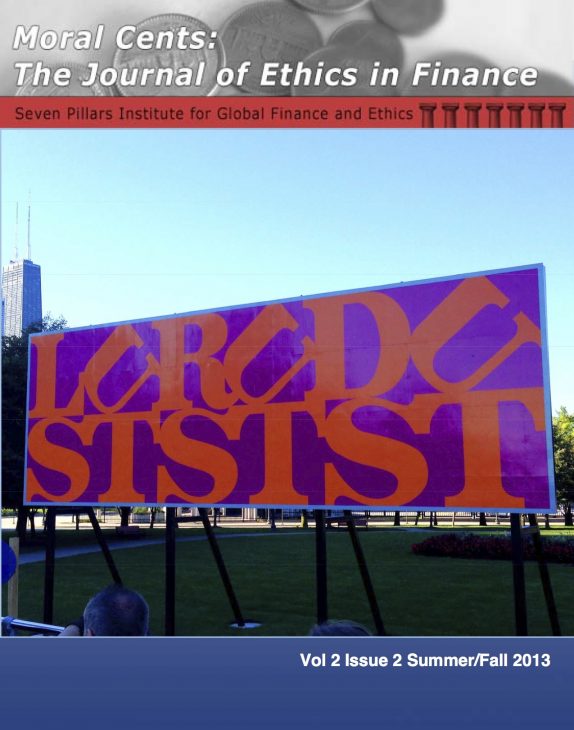Moral Cents: The Journal of Ethics in Finance (Summer/Fall 2013)

The topics covered in this, the fourth issue of Moral Cents, are diverse though the subject matter of every article falls within the scope of finance and ethics. The diversity is an indication that the ethical dimension is everywhere in finance. Ignoring the existence of this dimension does not serve us well as the recent past demonstrates. Banks such as JPMorgan and Deutsche Bank are still paying enormous, profit shattering, fines for misdeeds committed during and after the Great Financial Crisis. There is nothing to fear or disdain in studying ethics in finance, and much to be gained.
It may not even be far fetched to suppose a future Nobel in Economics being awarded for academic work in Ethics or Morals and (financial) Economics. This year’s prize was awarded to three economists: Eugene Fama, Lars Peter Hansen and Robert Shiller. The three are icons of their respective fields of research. Mr. Fama is the father of the Efficient Market Hypothesis that posits markets as informationally efficient i.e. share prices reflect all new available information. Mr. Hansen designed methods for analyzing drivers of stock market volatility and developed the Generalized Method of Moments. His Generalized Method reveals that standard models based on rationality, in the neoclassical sense, cannot explain swings in asset prices. Mr. Shiller, in contrast to Mr. Fama, believes that share prices do not just reflect market efficiency, but also are affected by investor psychology. It is psychology not rationality that accounts for financial bubbles. Mr. Shiller’s research therefore, gives a reason for the asset price volatility that Mr. Hansen pointed out, but could not explain using the rationality-based model of Mr. Fama. Thus, the Nobel committee awarded this year’s economic prize to a set of models that together is a more complete and comprehensive explanation of asset price movements. The message from the Nobel judges may be interpreted to mean that no single one of these theories is sufficient in itself to explain financial markets. Each has a deficiency. But together they offer a fuller and more complete picture. Yet, the trio still lacks an important element – the ethical dimension. We await further economic work on financial markets that takes account of moral values. Such research will add to the work of economists like Amartya Sen, Joseph Stiglitz and David C. Rose.
Moral Cents: The Journal of Ethics in Finance is published by
Seven Pillars Institute for Global Finance and Ethics
ISSN 2326-5663
